Biography
The composer was born in 1875 in France in Ciboure close to Biarritz near Spain. Marie Delouart, Ravel’s mother was born and grew up in Spain, Madrid. The father of Ravel, Joseph Ravel, was an industrialist and Swiss inventor. He was born and grew up in Haute-Savoie, France. They stimulared happy household for the family. Some of inventions ot Joseph were important enough. They are notorious circus machine, an internal-combustion engine and the "Whirlwind of Death". The "Whirlwind of Death" is an loop-the-loop. It was a hit until a awful accident in 1903 at the Bailey and Barnum circus. Joseph took his childrens to the fabrics all the time. He wanted them to see the newest mechanical devices. And he also was interested in culture and music. Ravel said many years after that he was sensitive to every kind of music as a child.
The composer was in very good relationships with his mother. She has Basque heritage. It has powerful influence on was very close to his mother, and her Basque heritage was a strong influence on Ravel’s music.and life. He strongle remembered her folk song all his life. The composer’s family three months after his birth moved to Paris. Édouard, composer’s bother, was born there. This boy was the favorite of his father. He bacame an engineer as well. Maurice started piano lesson when he was seven under Henry Ghys. He got then his basic instruction in composition, counterpoint and harmony. The composer’s earliest public piano release happened in 1889 rhen he was fourteen.
Ravel shown his preference for writing music, althoug he was really talented in playing the piano. Rimsky-Korsakov works released in 1889 at Exhibition Universelle made some impression on Ravel. He was affected by foreign music as well. It had great influence on him in the faces of Emmanuel Chabrier, Erik Satie and most strong Claude Debussy.
Ravel also met Ricardo Viñes this year. This composer become his best friends. He also was foremost interpreters of his piano music. And this men was a sagnificantw link Spanish music and Ravel. They were students when they met each other. Borth of them studied the music of Richard Wagner, Charles Baudelaire, Edgar Allan Poe, Stéphane Mallarmé and others good composers.
The parents of Ravel knew tht his passion is music. They sent the composer him to the Parisian Conservatory. Conservatoire de Paris. For the first time he was preparatory student ther. But he became the piano major of th Conservatory soon. He won his firss piano competition as a student in 1891. Nevertheless he wasn’t good at academically way. He was called “very gifted” and “somewhat heedless” at the same time during he was studied. The composer created hi first musical composition in 1893. This year he also met Erik Satie, the pianist of the bohem. His unorthodox experiments in music made a great influence on Ravel.
Ravel was so far from a bohemian and he was so diifer from Erik Satie. He was "self-possessed, a little aloof, intellectually biased, given to mild banter" at his twenty. Ravel looked like a dandy and was worried about his demeanor and appearance. He has big head and it seems to be so suitably to his great intellect. He read a lot and later collected a library with 1,000 volumes. He considered olderthwn he was. He was also self-critical and sensitive. He had great sense of humor as well. The composer began smoking when he was young and was smoking whole his life. He also enjoyed fine wine spirited conversation and strongly flavored dishes .
After Ravel didn’t meet the requirement to get of medal in competition in three consecutive years, in 1895 he was expelled. He became music professor in Tunisia. After that in 1898 he returned to the Conservatoiry. Ravel became studying with Gabriel Fauré. He was focus more on composing then playing. His studying of composition lasted for a fourteen years. He liked the methods and personality of Gabriel Fauré. They bacame really good colleagues and friends. The composer also studied with André Gédalge. He got the most good technique from him. Ravel accurate studied every instruments’ ability to determine the effects’ possible. He was pefectly sensitive to the instruments’ timbre and color. It brought him a fame of the orchestrator and transcriber his own works and works Schumann, Debussy and Mussorgsky as well.
Habanera for two pianos was the composer’s first famous work. It was transcribed later into the well-known third movement of his Rapsodie espagnole. Menuet antique was the first Ravel’s published work. Ravel created his orchestral piece In 1899. It was Shéhérazade. The critics called it a jolting debut: a clumsy plagiarism of the Russian School". He faced with some critics from time to time. Ravel met a lot of innovative young artists in 1900. They were musicians, critics poets who. They were Apaches. This group of people met each other regulary till the World War I and the were affected by with performances and intellectual arguments each. Thi groupe included Manuel de Falla and Igor Stravinsky. Ravel’s first performed composition for the Apaches was Jeux d’eau . It’s also called Fountains. It was his first professional work under Apaches’ impression. In 1902 he performed Viñes.
While he was in the Conservatory, he tried to win Prix de Rome all the time. It is very prestigious award. He didn’t get it because he was too raducal according to the opinion of the critics. The Director Théodore Dubois was too conservative to consider Ravel’s works are acceptable. The String Quartet in F was written in 1893. Now it is a chamber’s music standard work. But than it was considered not so good. And thre were lack in academical way in this work.
Ravel had to get award in 1905. Everyone was sure that he will win it. But this prize won Victor Gallois. After that the compose decided to lieve the Conservatory. After a scandal involving his loss of the prize in 1905 to, despite being favored to win, Ravel. It was called "Ravel Affair" in the press of Paris. Late it led to conflicts between The incident avant-gardists and conservatives. This period of the composer’slife is called "Spanish period". It was productive decade.
In the 1890’s the composer met Debussy. He was yonger than was older than Ravel by twelve years. Debussy created his "Prélude à l’Après-midi d’un faune". It had the great influence to all yonger musician. And it influenced as well. This impression was related with the new impressionism language. In 1900 Debussy inveted Ravelto his home to play each other’s works. Both of the composers attended a lot of the same concerts and events. Apaches and Ravel supported the stormy public debut of Debussy. It was the premiera of "Pelléas et Mélisande" opera. It drought fame to Debussy
Both of composers had alo the same style and musical approach. But there were som dufferences in their works. Debussy was more casual and spontaneous in his compositions. Ravel is considered more attentive to craftsmanship and form.
Ravel said that Debussy’s “genius was obviously one of great individuality, creating its own laws, constantly in evolution, expressing itself freely, yet always faithful to French tradition. For Debussy, the musician and the man, I have had profound admiration, but by nature I am different from Debussy.” He further wrote, “I think I have always personally followed a direction opposed to that of the symbolism of Debussy.”
Their music comlimented each other. And they played each other’s works so easuly.
In 1905 each of the composer had his own group. An thi group started to feud in public. They discussed who of the composers inluenced whom and who of them made the greatest works. This brought missunderstanding between the composers. Critics are also took participation in this competition. In 1913 Debussy and Ravel produced independently and published their settings for Stéphane Mallarmé’s poems. After that they continue too influence each other till the death of Debussy. It happened in 1918.
In 1905 Ravel composed his piano’s work "Miroirs". It was five pieces in “harmonic evolution”. On of the critics said that it is “intensely descriptive and pictorial. They banish all sentiment in expression but offer to the listener a number of refined sensory elements which can be appreciated according to his imagination.” The next amazing thig was “Nature Stories” ("Histoires naturelles"). These were five humorous songs assosiated with five animals.
After two years the composer finished Rapsodie espagnole. It was the composer’s first major “Spanish” piece. It was first written for four hands in piano bit later it was scored for orchestra. It sounds like folks melodies and it was really actual to that time. He got relly good critical commentaries in 1908. On of the critics said that this work is one of the most interesting novelties of the season”. But some others called it “pedantic and laborious”. The next thing he wrote was opera “The Spanish Hour” ("L’Heure espagnole" ). It was full of colour, humour and included a wide range of instruments. They are sarrusophone, trombone, celesta, tuba, bells, xylophone and many others.
After that Ravel extended his impressionistic piano music with Gaspard de la nuit. It was a collection with some influence from the writings of Edgar Allan Poe, with the same name by Aloysius Bertrand, especially in it’s second part. Viñes performed the premiere. This performance displeased Ravel. After that the composers’ relationships were not so good.
The next premieres, Vines was replaced Ravel with Marguerite Long. Ravel and Faure with some of theirs pupils esrablished Société Musical Indépendante (SMI), because they wer unhappy with the conservative type of the music. This society released the original version of the “Mother Goose” (l’Oye Ravel’s Ma Mere) in 1910. It was Ravel’s work. He made it in the tradition of Mussorgsky, Debussy and Schumann. This work was presented as a ballet in 1912. It happened after the transcription this work from the piano to orchestra. Later Ravel made his first tours abroad. He went to Scotland and England (1909 and 1911)
In 1909 the composer started to work with impresario Sergei Diaghilev. They work for the Diaghilevs ballet Daphnis et Chloé. It was supported with a perfect dance of Vaslav Nijinsky. Diaghilev was already famous in Paris after the debut of his opera Boris Godunov. It had the great impression on Parisians. They spent three years to make final form to “Daphnis et Chloé”. There were conflicts between creaters during this time. But anyway the ballet lasted just two performances and was met without positive attitude. The perfomances of it continious just one year later.
Stravinsky said that “Daphnis et Chloé” is one of the most beautiful products of all French music”. James Burnett also had positive opinion about this work. He stated that it is “Ravel’s most impressive single achievement, as it is his most opulent and confident orchestral score”. This work was full of lyricism, rhythmic diversity, evocations of nature. Two choruses and the large orchestra made it incrediable. When began World War I Ravel wrote his Trio in 1914. It was composed fot violin, piano and cello.
Ravel wanted to take participation in World War I. He wanted to be the pilot. Although he was good at it he wasn’t permitted to be the pilot, because of his age and not very good health. But after rejecting to be the pilot he decided to be truck driver at the Verdun front. In 1917 his mother is died. The composer fell into a “horrible despair”. His health also wasn’t good at that time. During this time he made some compositions. In the list of his composition he wrote during this time was his famous Le Tombeau de Couperin including. It was presented in 1919. Ravel established a National League for the Defense of French Music. According to the opinion of on of the critics it was dangerous:
“it would be dangerous for French composers to ignore systematically the works of their foreign colleagues, and thus form themselves into a sort of national coterie: our musical, so rich at the present time, would soon degenerate and become isolated by its own academic formulas.”
After Debussy died and Schoenberg, Satie and Stravinsky mergered began ethe new modern classic music direction.
In 1920 Ravel composed La Valse for Diaghilev It was called Wien (Vienna). This composition was planned for using in a ballet. But Diaghilev rejected it. He considered it as “not a ballet. It’s a portrait of ballet”. Ravel was really angree and upset. After that he stopped hi relations with Diaghilev. When they met each other in 1925 the composer rejected to shake hand of Diaghilev. Diaghilev challenged the composer to a duel. But friends of Diaghilev didn’tlet them to do it. They nevr met each other again.
Ravel was awarded Légion d'honneur by the French government In 1920, but he refused this prize. The next year the composer retired to the French countryside. He wrote yis music there. Ravel came regularly to Paris for socializing and performances. He also decided to increase the foreign concert tours. The SMI continued its role in promoting of new music. Ravel still was the leader of it. He worked with American and British composers such as Ralph Vaughan Williams, Arnold Bax, Virgil Thomson and Aaron Copland. With Debussy’s passing, Ravel ascended to the perceived leadership of French classical music. Ravel finished his Sonata In 1922. It was for Cello and Violin.
In 1923 The Times reported: “Since the death of Debussy, he has represented to English musicians the most vigorous current in modern French music." But in real life his music wasn’ t considered au courant in France anymore. Satie became the ner force for the generation of French composers. This new generation was known as Les Six. Ravel was aware of that.
After the war musia chnged as all the cultures spheres affected by this war. American influences also changed the music direction. Jazz became really popular. And Ravel as others composers included jazz elements into his compositions.
Ravel finished his famous composition in 1922. It was famous orchestral arrangement of Mussorgsky’s Picture. It was written for Serge Koussevitzsky. This work brought Ravel fame and great popularity. In the 1920s Ravel had seccessful tours London, Amsterdam, Milan, Vienna and Madrid. It brought him additional fame.
In 1925 he completed the opera L’Enfant et les sortileges. It included ragtime accents and significant jazz. At this time the composer alsofinished his Chansons madécasses. It included really excellent vocal art. In 1927 his quartet was recorded. He uderstood the importance of recording his work. He recorded his works until he died. This yaer Ravel also finished his “Blues”. It was Sonata for Piano and Violin. It got really great fame and attention.
In 1928 the composer had tour in North America. He got $10, 000 for his concerts there. He got also great success and a lot of fellows. He got there more famous than in France. And he was really glad. The critics were also excited by the composer’s works. One of them was famous critic Olin Downes. He stated: “Mr. Ravel has pursued his way as an artist quietly and very well. He has disdained superficial or meretricious effects. He has been his own most unsparing critic.” Ravel visited 25 cities in the U.S.A. And he considered the best foreign composer there.
The composer met met George Gershwin in U.S. They went to hear jazz in New York. George Gershwin wanted to study with Ravel. But the Revel said: "Why do you want to become a second-rate Ravel when you are already a first-rate Gershwin?". After that Revel asked George Gershwin how much money did he earnd. After the answer he said that he should study with George Gershwin.
Ravel also visited New Orleans. The influence of jazz was in all his later works.
When the composer came back to France he wrote Boléro. It was the most famous work of Ravel. It’s also known as “Fandango”. It was the new direction of his music. This work brought him the fame. The theme of this music was used in the film “Bolero”. It was a Hollywood film of 1934 with George Raft and Carole Lombard. In 1930 Ravel conducted Boléro with the Lamoureux Orchestra and made a recording after that.
The composer wrote two his great works at the same time. On of them was buoyant and bright. Another one - powerful and dark. The composer was inspired by Paul Wittgenstein. Paul Wittgenstein, who had excellent technical challenges. Wittgenstein said about these works: “Only much later, after I’d studied the concerto for months, did I become fascinated by it and realized what a great work it was.” , Wittgenstein played the composition for the first time in concert in 1933. One of the critics said then:“From the opening measures, we are plunged into a world in which Ravel has but rarely introduced us.”
Another piano work was finished later. This work was wrote according to the models of Domenico Scarlatti, Mozart, Camille Saint-Saëns. It’s also included elements of jazz. Ravel wrote this composition to his favorite pianist. This pianist was Marguerite Long. He played this work in twenty cities of Europe. The composer and the pianist recorded this composition in in 1932.
Ravel was injured In 1932 in a car accident. This injury wasn’t serious for the first time. But later that brought aphasia-like symptoms. Then he was absent-minded. At this time he was working for Adventures of Don Quixote film. But he wrote just three songs for that film. After the accident he couldn’t compose anymore. These three songse were used in the film and recorded later.
New York Times reported On April 8, 2008 that the composer might have been in the first stage of frontotemporal dementia in 1928. Neurological disease were also proved in some medical reseaches.
In 1937 the composer had brain surgery. After that he died. Ravel was buried in Paris with his parents.
Ravel had never had romantic relations. For this reasn there are a lot of different rumors about his intimate relations with Diaghilev. But it wasn’t proved. He was so sophisticated with his work that he didn’t need any romantic relations. But the recent reseaches has presented that he hid the name of Misia Godebska in transcription of two groups of notes. They met each other in their lives, but it’s not clear wether they have romantic relations.
Ravel was inspired by many different things. He absorbed diversification and innovation everywhere. Vladimir Jankélévitch wrote the composer’s biography. He said: "no influence can claim to have conquered him entirely. Ravel remains ungraspable behind all these masks which the snobbery of the century has attempted to impose." The musical language of Ravel was really original. It didn’t belong to impressionism or to modernism. It contained a lot of different styles and influences. Ravel refused the term “impressionist” as he thought that it was term for paintists not composers. Debussy was the same oppinion about this.
The composer was always was open to new ideas. Composer’s music had it’s own distinct and innovative style. While he was a student he studied thecomposers’s scores. He considered it was very important for composing. And he was right. He created new direction of French music. But at the same tim he felt connection with the composers of old style such as Wagner, Beethoven and others. His works were really complecated ans so easy at the same time. They included satanic impiety and Middle Ages Catholicism
Some aspects of the composer’s seems to be fall into 18th the century lineage of French classicism. At that time the most famous composers were Rameau and Couperin. Sensibilities of French music of 19th century of Chabrier and Fauré were reflected in Pavane pour une infante défunte, Sérénade grotesque, Menuet antique But Jeux d'eaue included some innovations of Debussy and Satie. The poetry and famous virtuosity of Concerto and Gaspard de la nuit hint at Chopin and Liszt.
North America brought jazz elements to the Ravel’s music. You can hear it in Violin Sonata, L'enfant et les sortilèges, Piano Concerto in G. The influence of Russian school inspired him to wrote the orchestration of Mussorgsky's Pictures at an Exhibition and "À la manière de Borodin". Famous Saint-Saëns, Schoenberg, Mozart, Schubert had also great influens on his compositions.
But at the sane time the music of Ravel was innovative and unique. He used music of Satie, Chabrie, Debussy for his famous compositions. he did not follow the contemporary trend towards atonality, as pioneered by Schoenberg. His favourite two modes were the Phrygian and the the Dorian. He liked to use modes with minor or major flavors like in Mixolydian. He also used the teachiques of Vaughan Williams, Gédalge, Aeolian.
The composer usually used intricate modulations and extended in his works. Different types of dances had alo influence him.His favourit dance was the minuet. He was often inspired by czardas, passacaglia, boléro, forlane, rigaudon, habanera, waltz and others.
Basque music was very important for him. He got rhit love to Basque music from his childhood. He began write Zazpiak Bat inspired by Basque music. But he never finished tis composition. He also used folk and national theme in his compositions. He liked Hungarian, Hebraic, Greek themes.
Ravel and Debussy were considered the most great French impressionist composers. But in reality the composer was more than just Impressionist. He used really broad range of different elements for creation his amazing music.
Ravel took the theme from Gounod's Faust and placed it in the Chabrier’s style of. It was really great thing. He often mixed different styles different composers. But as an output he always got harmonical professional music. He imitated Liszt's and Paganini's themes and combined them with the works of other composers. He was good at every style. He even could sung and his voice was really amazing.
Although Ravel was considered the most great French impressionist composer, he considered himself classicist in many ways. He often used traditional models. For example, he often used the A-B-A form. But he fulled these trditional forms with innovative and unique content. Ravel said: "If I were called upon to do so, I would ask to be allowed to identify myself with the simple pronouncements made by Mozart ... He confined himself to saying that there is nothing that music cannot undertake to do, or dare, or portray, provided it continues to charm and always remain music."
He used to mask his structure’s sections with different transitions. That changed the the motif’s beginnings. It’s clear in his composition Valses nobles et sentimentales. This work was inspired by collections of Franz Schubert. Valses sentimentales and Valses nobles are unique compositions. They are included seven movements, which began and ended without any pause.
He had also his own method of composing. It was targeted on perfection and it was craftsman-like as well. The great composer Igor Stravinsky said about Ravel "he is the most perfect of Swiss Watchmakers”. The composer could work for one piece of composition during several years. He made it clearly an daccurate. He always wanted to get the best and perfect result in music composing. He said about that “My objective, therefore, is technical perfection. I can strive unceasingly to this end, since I am certain of never being able to attain it. The important thing is to get nearer to it all the time.”
But one must spend much time in eliminating all that could be regarded as superfluous in order to realize as completely as possible the definitive clarity so much desired. The moment arrives when new conceptions must be formulated for the final composition, but they cannot be artificially forced for they come only of their own accord, often deriving their original from some far-off perception and only manifesting themselves after long years.”
Most of nhis worked for the first time were made as a piano music. Later he completed them into orchestra music for difference instruments. His piano music was inspired by Scarlatti, Mozart, Couperin, Liszt and Chopin. All his difficult pieces always included harmonics, virtuosity, refinement and elegance. Walter Gieseking said that Ravel’s piano compositions included the most difficult pieces, but they were always “musically perfectly logical concepts” at the same time.
Orchestrator’s talent of the Ravel brought him high regard. The structure of the his orchestrator was always clear and accurate ditaled. It was colorful, bright and light. It sounded perfectly as considered many of the famous critics. The melody could begin with one instrument and then continue with another. And all these methods were hormonical.
The composer wrote not so many composition, because he was perfectionist and he could write one composition for several years. Hewrote compositions for two piano concerti, piano , chamber works, opera, ballet music, song cycles. Ravel tried to avoid the symphonic type of music. He also tried do not use religious forms and themes.
Ravel wrote his composition accurate and often cottected them to achieve perfectness. He rewrote all the work when he made one mistake. His published works included a lot of mistakes and when he knew that he republished these works with rafted his publisher Durand.
Sometimes he condudcted his works to other composers. One of the English critics said once: “His baton is not the magician's wand of a virtuoso conductor. He just stood there beating time and keeping watch." The composer was always accurate and clear with all the instructions.
Ravel always supported young musicians and promoted them. His promoted students were Manuel Rosenthal, Alexis Roland-Manuel, Vlado Perlemuter, Maurice Delage, Ralph Vaughan Williams and many others. His teching methods were the same with his teacher Gabriel Fauré. He liked to avoid different boring formula and to develop individualism in his students. He thought that the idealistic composer is Mozart, who balanced among "classical symmetry and the element of surprise”. He was good teacher with unique aproach for teching.
He was also influenced by his young students. They inspired him to write new innovative compositions. He also got his inspiration from Brahms, Hector Berlioz, Beethoven,Tchaikovsky and Franck. He also was inspired by Liszt, Chopin, Mendelssohn, Schubert and others.







![Russian legends - David Oistrakh [20 CD]](http://static.classicalm.com/repository/collection-cover/small/267-img1318418713553266.jpg)
![Russian legends - Viktor Tretiakov [6 CD]](http://static.classicalm.com/repository/collection-cover/small/271-img1318800770253179.jpg)
![Russian legends - Gidon Kremer [10 CD]](http://static.classicalm.com/repository/collection-cover/small/273-img1318873589669975.jpg)
![Russian legends - Emil Gilels [16 CD]](http://static.classicalm.com/repository/collection-cover/small/261-img1318115683212190.jpg)

![Steinway Legends - Martha Argerich [2 CD]](http://static.classicalm.com/repository/collection-cover/small/237-img1316861995833914.jpg)
![Deutsche Grammophon Classic Gold [CD 3 of 3]](http://static.classicalm.com/repository/collection-cover/small/1316-img1361384204300956.jpg)
![Top 100 der Klassik [CD 5 of 5]](http://static.classicalm.com/repository/collection-cover/small/1368-img1372595835213275.jpg)

![The Top 100 Masterpieces of Classical Music 1685-1928 [CD10of10]](http://static.classicalm.com/repository/collection-cover/small/1362-img1372449071864441.jpg)
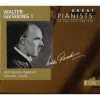
![Russian legends - Daniel Shafran [7 CD]](http://static.classicalm.com/repository/collection-cover/small/277-img1319146356180506.jpg)

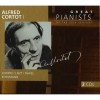
![Russian legends - Lazar Berman [7 CD]](http://static.classicalm.com/repository/collection-cover/small/263-img1318187682202830.jpg)



























![Martha Argerich and Friends: Live from Lugano 2011 [CD 3 of 3]](http://static.classicalm.com/repository/disk-cover/small/1865-img1344869071445448.jpg)

![Martha Argerich Edition - Solos & Duos [CD5of6]](http://static.classicalm.com/repository/disk-cover/small/3585-img1404480174476811.jpg)
![The Liszt Project (Pierre-Laurent Aimard) [CD2of2]](http://static.classicalm.com/repository/disk-cover/small/3606-img1404825666184753.jpg)























![Martha Argerich - The Collection 2 - The Concerto Recordings [CD1of7]](http://static.classicalm.com/repository/disk-cover/small/3562-img1403953391484746.jpg)
![Martha Argerich - The Collection 2 - The Concerto Recordings [CD2of7]](http://static.classicalm.com/repository/disk-cover/small/3563-img1403953852176576.jpg)

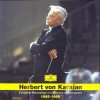



![The 100 Most Beautiful Melodies [CD 2 of 6]](http://static.classicalm.com/repository/disk-cover/small/2911-img1361460313445296.jpg)




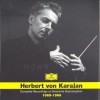




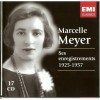











![Anthology of the Royal Concertgebouw Orchestra: Live the Radio Recordings 1960-1970 [CD8]](http://static.classicalm.com/repository/disk-cover/small/3445-img1395223501215523.jpg)
















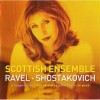
![Janet Baker: ''The Philips & Decca Recordings, 1961 - 1979'' [CD 5 of 5]](http://static.classicalm.com/repository/disk-cover/small/3012-img1372074199266785.jpg)
![Helene Grimaud - The Piano Collection [CD1of5]](http://static.classicalm.com/repository/disk-cover/small/3553-img1403789327261273.jpg)

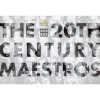
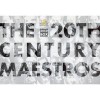
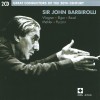







![Wilhelm Furtwaengler 1942-1944 Vol. 2 [CD 5 of 5]](http://static.classicalm.com/repository/disk-cover/small/2975-img1365442883625048.jpg)




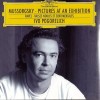

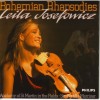










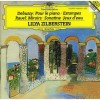

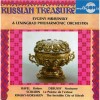




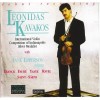













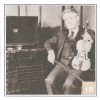
![Richter in Hungary, Volume 1 [2 CD]](http://static.classicalm.com/repository/disk-cover/small/875-img1316349914365481.jpg)







![The Heifetz Collection, Volume 8 [2 CD]](http://static.classicalm.com/repository/disk-cover/small/929-img1316982090166364.jpg)

![The Heifetz Collection, Volume 19 [2 CD]](http://static.classicalm.com/repository/disk-cover/small/947-img1317413695600051.jpg)

![The Heifetz Collection, Volume 2 [3 CD]](http://static.classicalm.com/repository/disk-cover/small/717-img1315129517717299.jpg)

![The Heifetz Collection, Volume 6 [2 CD]](http://static.classicalm.com/repository/disk-cover/small/725-img1315427995644122.jpg)


![The Heifetz Collection, Volume 46 [2 CD]](http://static.classicalm.com/repository/disk-cover/small/1001-img1318023469472305.jpg)


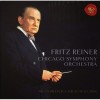

















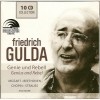




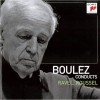








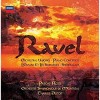







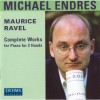


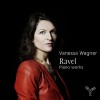





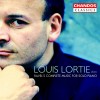







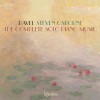



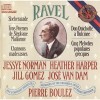





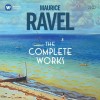








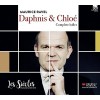



























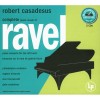

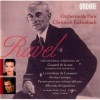






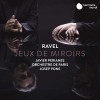

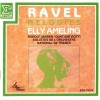




![Maurice Ravel. Orchestral Works [CD 1 of 4]](http://static.classicalm.com/repository/composition-cover/small/14355-img1345223969896588.jpg)
![Maurice Ravel. Orchestral Works [CD 2 of 4]](http://static.classicalm.com/repository/composition-cover/small/14357-img1345225372536759.jpg)
![Maurice Ravel. Orchestral Works [CD 3 of 4]](http://static.classicalm.com/repository/composition-cover/small/14359-img1345369135669443.jpg)
![Maurice Ravel. Orchestral Works [CD 4 of 4]](http://static.classicalm.com/repository/composition-cover/small/14361-img1345373446160567.jpg)